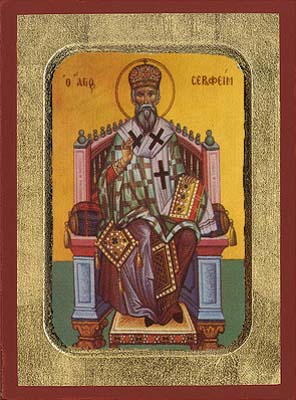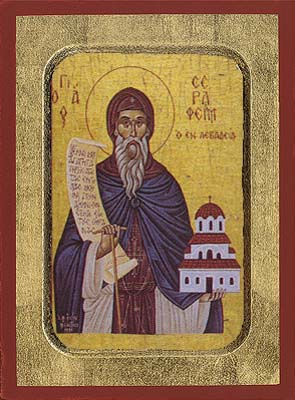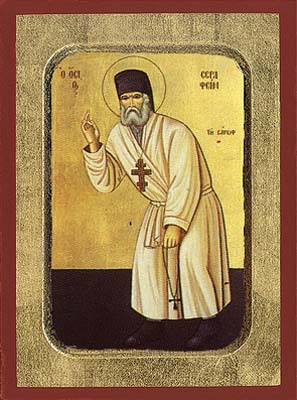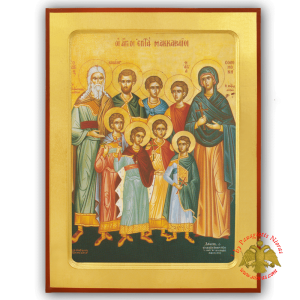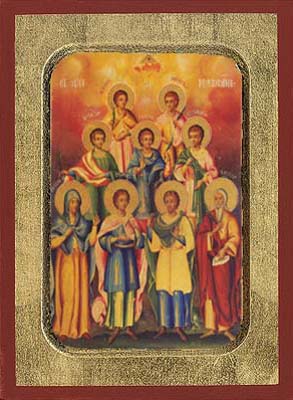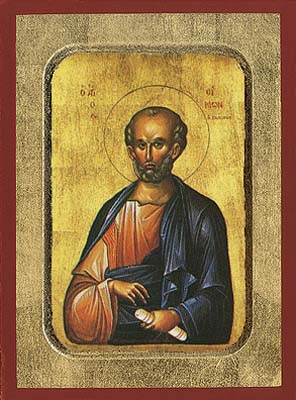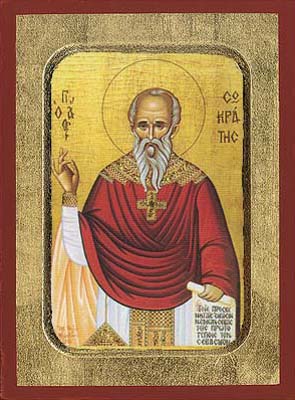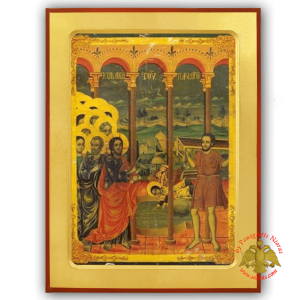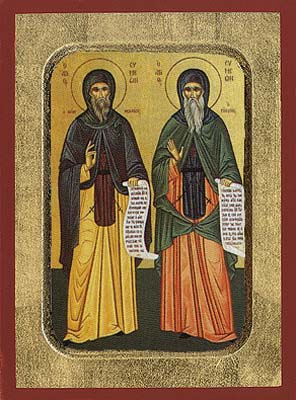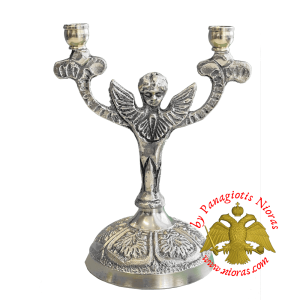
Сall us today
+30.2103230345
My account
Login
Register
- Byzantine Icons
- BeesWax and Incense Icons
- Byzantine Aluminium Icons
- Byzantine Silver Plated Icons
- Framed Glass Holy Icons
- Hand Carved Icons
- Hand Made Enamel Icons
- Hand Made Icons of Christ
- Hand Made Icons of Holy Virgin Mary
- Hand Made Icons of Saints
- Hand Painted Byzantine Icons
- Hand Painted Icons Special Orders
- Icon Display Stands
- Iconostasis with Electric Lamp
- Laminated Holy Icons
- Orthodox Annual Agiologion
- Orthodox Crystal & Glass Icons
- Orthodox Pin Button Icons
- Silver Byzantine Icons
- No.1055
- No.1057 Size: 34.5 x 42cm
- No.1058 Size:31x35cm
- No.1060 Size: 26.5cm x 33cm
- No.1062 Size: 24cm x 28cm
- No.1064 Size: 21 x 26cm
- No.1065 Size: 25cm x 31cm
- No.1068 Size:22x27cm
- No.1073 Size: 23cm x 27cm
- No.1075 Size : 19cm x 24cm
- No.1078 Size: 16cm x 22cm
- No.1082 Size: 14cm x 18cm
- No.1083 Size: 13cm x 16cm
- No.M1183 Size: 14.5 x 11.5cm
- Silver Classical Collection Icons
- Wedding Crowns & Cases
- Wooden Antique Style Icons
- Wooden Byzantine Icons
- Wooden Diptychs & Triptychs
- Wooden Iconostasis
- Wooden Icons with Glass Oil Cup
- Wooden NeoClassical Icons
- Wooden Russian Style Icons
- Candle Stands
- Cemetery Funeral Products
- Church Supplies
- Andidoron Bowls
- Anointing Oil Bottles
- Baptismal Fonts
- Candelabra Ventilated
- Candle Cases & Coin Boxes
- Cement ReadyMade Church
- Chains and Gift Boxes for Englolpion Sets
- Chanter Psalter Stands
- Cherubims Exapterigo
- Church Candle Recycle Box
- Church Chairs & Throns
- Church Corridor Columns
- Church Orthodox Bells
- Church Supplies upon Request
- Crosiers – Bishop Stuff
- Ecclesiastical Alouminium Chandelier
- Ecclesiastical Candelabrum
- Ecclesiastical Censers
- Ecclesiastical Icon Stands
- Ecclesiastical Latterns and Lamps
- Ecclesiastical Special Cases
- Ecclesiastical Vase
- Ecclesiastical Vigil Oil Candles
- Ecclesiastical Zeon & Sprinkler
- Engolpion Panagia Sets
- Epitaph Kouvouklion
- Holy Apostle Cover
- Holy Communion Chalice Set
- Holy Communion Wine
- Holy Gospel Book Covers
- Holy Oil Bowls
- Holy Table Oil Candles
- Holy Table Tabernacle
- Lances – Spears for Holy Communion
- Monastic Talanton
- Orthodox Church Sconces
- Orthodox Gospel Metal Stands
- Ostrich Orthodox Decorated Egg
- Pectoral Crosses
- Reliquaries Boxes
- Tables for Church
- WoodCarved Candelabrum
- WoodCarved Chairs – Stalls
- Ex-Voto Tamata Milagros
- Incense Burners & Orthodox Incense
- Alouminium Incense Burners
- Ceramic Incense Burners
- Holy Oil Frangrance
- Home Brass Incense Burners
- Incense Athonite
- Incense Coal
- Incense Incesco Catholic
- Incense Metal Boxes
- Incense Natural & Resins
- Incense Orthodox
- Incense Premium Athonite
- Incense Wooden boxes
- Metal Tongs for Incense
- Porcelain Incense Burners
- Orthodox CD & Book Library
- Orthodox Crosses
- Orthodox Gifts
- 2024 Lucky Charms
- 2024 Paschal & Church Candles
- 2025 Orthodox Calendars
- Aladdin Lamps
- Bookmarks
- Ceramic & Crystal Gifts
- Easter Coloring Dye for Eggs
- Ecclesiastical Colognes
- Gold Eye Pentants
- Holy Water Bottles
- Key Rings
- Lanterns
- Martirika
- Orthodox Car & Gifts Pendants
- Orthodox Cross Gold K14
- Orthodox Filakto
- Orthodox Icons Magnets
- Orthodox Neckwear Crosses & Icons
- Praying Ropes
- Praying Rozaries
- Prosphora Seals
- Silver 925 Car Amulets
- Silver 925 Chains
- Silver 925 Orthodox Crosses
- Silver 925 Orthodox Pendants
- Silver 925 Rings
- Silver 925 Russian Crosses
- Small Gospel Pendants
- Traditional Blue Eyes
- Various Small Icons
- Wax Healing Creams
- Wooden NeckWear Crosses
- Vestments, Traditional Costumes & Church Linens
- Baptism Clothing
- Clerics Hats
- Covers Of The Holy Grail
- Ecclesiastical Ribbons
- Epitaph Cover Koimesis
- Epitaph Covers Mourners
- Holy Communion Cup Covers
- Holy Communion Purificators & Accessories
- Iconostasis Orthodox Cover
- Orthodox Antimension
- Orthodox Belts
- Orthodox Cotton Cases and More
- Orthodox Cufflinks
- Orthodox Flags & Banners
- Orthodox Greek Flag With Holy Icons
- Rassa – Anteri
- Shroud
- Velvet Orthodox Garment & Prayers
- Vestment Embroidery Derocations
- Vestment Fabrics
- Vestments for Altar Boy
- Vigil Oil Candles
- Show more
Menu
Categories
- Vestments, Traditional Costumes & Church Linens
- Holy Communion Purificators & Accessories
- Holy Communion Cup Covers
- Orthodox Antimension
- Baptism Clothing
- Epitaph Covers Mourners
- Orthodox Greek Flag With Holy Icons
- Orthodox Cufflinks
- Rassa - Anteri
- Orthodox Cotton Cases and More
- Vestment Fabrics
- Shroud
- Clerics Hats
- Ecclesiastical Ribbons
- Orthodox Flags & Banners
- Orthodox Belts
- Velvet Orthodox Garment & Prayers
- Vestment Embroidery Derocations
- Covers Of The Holy Grail
- Iconostasis Orthodox Cover
- Vestments for Altar Boy
- Epitaph Cover Koimesis
- Vigil Oil Candles
- Byzantine Icons
- Wedding Crowns & Cases
- Wooden Russian Style Icons
- Wooden Diptychs & Triptychs
- BeesWax and Incense Icons
- Hand Painted Icons Special Orders
- Hand Carved Icons
- Laminated Holy Icons
- Wooden Byzantine Icons
- Wooden Iconostasis
- Hand Painted Byzantine Icons
- Wooden NeoClassical Icons
- Iconostasis with Electric Lamp
- Orthodox Pin Button Icons
- Silver Byzantine Icons
- No.1082 Size: 14cm x 18cm
- No.1055
- No.1075 Size : 19cm x 24cm
- No.1062 Size: 24cm x 28cm
- No.1078 Size: 16cm x 22cm
- No.1058 Size:31x35cm
- No.1057 Size: 34.5 x 42cm
- No.1083 Size: 13cm x 16cm
- No.1064 Size: 21 x 26cm
- No.1073 Size: 23cm x 27cm
- No.M1183 Size: 14.5 x 11.5cm
- No.1060 Size: 26.5cm x 33cm
- No.1068 Size:22x27cm
- No.1065 Size: 25cm x 31cm
- Orthodox Crystal & Glass Icons
- Framed Glass Holy Icons
- Hand Made Icons of Christ
- Icon Display Stands
- Orthodox Annual Agiologion
- Hand Made Icons of Saints
- Wooden Icons with Glass Oil Cup
- Hand Made Icons of Holy Virgin Mary
- Silver Classical Collection Icons
- Byzantine Silver Plated Icons
- Byzantine Aluminium Icons
- Wooden Antique Style Icons
- Hand Made Enamel Icons
- Candle Stands
- Cemetery Funeral Products
- Church Supplies
- Ecclesiastical Vigil Oil Candles
- Ecclesiastical Censers
- Crosiers - Bishop Stuff
- Lances - Spears for Holy Communion
- Ecclesiastical Vase
- Holy Communion Chalice Set
- Orthodox Gospel Metal Stands
- Anointing Oil Bottles
- Holy Table Tabernacle
- Holy Gospel Book Covers
- Orthodox Church Sconces
- Chains and Gift Boxes for Englolpion Sets
- Monastic Talanton
- Holy Apostle Cover
- Ostrich Orthodox Decorated Egg
- Engolpion Panagia Sets
- Chanter Psalter Stands
- Ecclesiastical Zeon & Sprinkler
- Church Candle Recycle Box
- Pectoral Crosses
- Church Corridor Columns
- Ecclesiastical Candelabrum
- Holy Oil Bowls
- Church Supplies upon Request
- Ecclesiastical Alouminium Chandelier
- Candle Cases & Coin Boxes
- Candelabra Ventilated
- Ecclesiastical Special Cases
- Ecclesiastical Latterns and Lamps
- Holy Communion Wine
- WoodCarved Chairs - Stalls
- Cherubims Exapterigo
- Ecclesiastical Icon Stands
- Church Orthodox Bells
- Cement ReadyMade Church
- Baptismal Fonts
- Epitaph Kouvouklion
- Reliquaries Boxes
- Church Chairs & Throns
- Holy Table Oil Candles
- WoodCarved Candelabrum
- Andidoron Bowls
- Tables for Church
- 2025 Collection Paschal & Church Candles
- Ex-Voto Tamata Milagros
- Incense Burners & Orthodox Incense
- Incense Coal
- Ceramic Incense Burners
- Alouminium Incense Burners
- Holy Oil Frangrance
- Incense Premium Athonite
- Incense Natural & Resins
- Incense Incesco Catholic
- Incense Athonite
- Home Brass Incense Burners
- Porcelain Incense Burners
- Incense Metal Boxes
- Metal Tongs for Incense
- Incense Orthodox
- Incense Wooden boxes
- Orthodox CD & Book Library
- Orthodox Crosses
- Orthodox Gifts
- Various Small Icons
- Silver 925 Car Amulets
- Gold Eye Pentants
- Key Rings
- Holy Water Bottles
- Orthodox Cross Gold K14
- Wooden NeckWear Crosses
- Easter Coloring Dye for Eggs
- Ecclesiastical Colognes
- Orthodox Neckwear Crosses & Icons
- Small Gospel Pendants
- Orthodox Car & Gifts Pendants
- Traditional Blue Eyes
- Silver 925 Rings
- Orthodox Filakto
- Orthodox Icons Magnets
- Praying Ropes
- Silver 925 Chains
- Bookmarks
- 2025 Orthodox Calendars
- Silver 925 Orthodox Crosses
- Silver 925 Orthodox Pendants
- Lanterns
- Martirika
- Wax Healing Creams
- Aladdin Lamps
- Praying Rozaries
- 2024 Lucky Charms
- Prosphora Seals
- Ceramic & Crystal Gifts
- Silver 925 Russian Crosses
Wishlist
0
Cart
0
0
Cart
0
No products in the cart.
Return To Shop
Shopping cart (0)
Subtotal: $0.00
Free shipping over 49$
Seraphim of Levadia
SKU: st213-2701 $6.52 – $269.98
Iconographer: Holy Monastery of St.Meletios, Oinoi
Seraphim of Sarov, Full Figure, Annunciation of Patmos
SKU: st155-2567 $5.94 – $269.40
Iconographer: Sister Kiprianis
Seraphim of Sarov, Panteleimon of Holy Mountain
SKU: st349-9186 $6.52 – $269.98
Commemorates on : January 2
Sergios on HorseBack
SKU: st320-2973 $6.52 – $269.98
Iconographer: Holy Monastery Of St.Meletios,Oinoi
Sevastianos the Martyrdom
SKU: st212-2629 $6.52 – $269.98
Iconographer: Father MichealCommemorates on: December 18This Saint, who was from the city of Milan, was a member of the Senate as well as a zealot for the Faith of Christ, and had converted many to the knowledge of God. When Diocletian and Maximian began a Persecution against the Christians, Saint Sebastian was arrested and pierced with sharp arrows, and the bones of his body were shattered with clubs; and being cut into pieces, he gave up his spirit to God in the year 288. Together with him there were others also who died while enduring various tortures. Their names are
Seventh Holy Ecumenical Council, at Nice of Bithynia – Neoclassical Wooden Holy Icon
SKU: v-cl26181 $5.94 – $52.03Siloan of Mount Athos Byzantine Wooden Icon
SKU: st-2652 $5.94 – $269.40
Iconographer: Father NikonCommemorates on: July 30
Simon Zelotes the Apostle
SKU: st157-2392 $5.94 – $269.40
Iconographer: Liondas Chr.Commemorates on: May 10This Apostle was one of the Twelve, and was called Simon the Cananite by Matthew, but Simon the Zealot by Luke (Matt. 10:4; Luke 6:15). The word “Cananite” used by Matthew is believed to be derived from kana, which in the Palestinian dialect of Aramaic means “zealot” or zealous”; Luke therefore translates the meaning of “Cananite.” Later accounts say that he was the bridegroom at the wedding in Cana of Galilee, where the Lord Jesus changed the water into wine, making this the first of His miracles (John 2:1-11); according to some, he is called
Stephen – Stefanos, THE FIRST MARTYR: THE MARTYRDOM
SKU: st002-9144 $6.53 – $270.00
Iconographer: MONK MICHAEL, MOUNT ATHOSCommemorates on: December 27Saint Stephen was a Jew, by race, and, as some say, a disciple of Gamaliel, the teacher of the Law. He was the first of the seven deacons whom the Apostles established in Jerusalem to Care for the poor, and to distribute alms to them. Being a man hill of faith and of the Holy Spirit, he performed great signs and wonders among the people. While disputing with the Jews concerning Jesus, and wisely refuting their every contradiction, so that no one was able to withstand the wisdom and the spirit whereby he
Symeon the Stylites Byzantine Wooden Icon
SKU: st-2264 $5.94 – $269.40
Iconographer: Pachomaion
Commemorates on: September 1
Symeon the Theologian
SKU: st253-2522 $6.52 – $269.98
Iconographer: Sister KiprianiCommemorates on: March 12Saint Symeon became a monk of the Studite Monastery as a young man, under the guidance of the elder Symeon the Pious. Afterwards he struggled at the Monastery of Saint Mamas in Constantinople, of which he became abbot. After enduring many trials and afflictions in his life of piety, he reposed in 1022. Marvelling at the heights of prayer and holiness to which he attained, and the loftiness of the teachings of his life and writings, the church calls him “the New Theologian.” Only to two others, John the Evangelist and Gregory, Patriarch of Constantinople,
Synaxis of Holy Archangels Michael and Gabriel Byzantine Wooden Icon – Parnes Monastery
SKU: st-2581 $5.94 – $269.40
Iconographer: Holy Monastery Dormition of Theotokos, Parnitha
Search
Filter by price
Product categories
- 2025 Collection Paschal & Church Candles (172)
- Kids Pascha Lampada (35)
- Orthodox Church Candles (13)
- Orthodox Pascha Lampada (49)
- Paschal Colored Lampada (75)
- Byzantine Icons (2597)
- BeesWax and Incense Icons (15)
- Byzantine Aluminium Icons (96)
- Byzantine Silver Plated Icons (92)
- Framed Glass Holy Icons (4)
- Hand Carved Icons (4)
- Hand Made Enamel Icons (68)
- Hand Made Icons of Christ (37)
- Hand Made Icons of Holy Virgin Mary (60)
- Hand Made Icons of Saints (135)
- Hand Painted Byzantine Icons (44)
- Hand Painted Icons Special Orders (121)
- Icon Display Stands (34)
- Iconostasis with Electric Lamp (60)
- Laminated Holy Icons (68)
- Orthodox Annual Agiologion (4)
- Orthodox Crystal & Glass Icons (15)
- Orthodox Pin Button Icons (5)
- Silver Byzantine Icons (317)
- No.1055 (12)
- No.1057 Size: 34.5 x 42cm (13)
- No.1058 Size:31x35cm (6)
- No.1060 Size: 26.5cm x 33cm (12)
- No.1062 Size: 24cm x 28cm (28)
- Theotokos (7)
- Various Themes (21)
- No.1064 Size: 21 x 26cm (5)
- No.1065 Size: 25cm x 31cm (15)
- No.1068 Size:22x27cm (3)
- No.1073 Size: 23cm x 27cm (33)
- No.1075 Size : 19cm x 24cm (27)
- No.1078 Size: 16cm x 22cm (90)
- No.1082 Size: 14cm x 18cm (12)
- No.1083 Size: 13cm x 16cm (55)
- No.M1183 Size: 14.5 x 11.5cm (6)
- Silver Classical Collection Icons (4)
- Wedding Crowns & Cases (42)
- Wooden Antique Style Icons (206)
- Wooden Byzantine Icons (754)
- Archangels & Various Themes (53)
- Christ (117)
- Holy Apostle Icons (43)
- Museum Themes (21)
- Prophet Icons (19)
- Saints Female (115)
- Saints Male (280)
- Theotokos (105)
- Wooden Plain Byzantine Icons (1)
- Wooden Diptychs & Triptychs (107)
- Wooden Iconostasis (45)
- Wooden Icons with Glass Oil Cup (12)
- Wooden NeoClassical Icons (193)
- Wooden Russian Style Icons (55)
- Candle Stands (172)
- Cemetery Funeral Products (276)
- Cemetery Alouminum Cross (79)
- Cemetery Candles (27)
- Cemetery Memorial Cross (18)
- Cemetery Memorial Frames (22)
- Cemetery Memorial Incense Burners (20)
- Cemetery Memorial Oil Candles (57)
- Cemetery Memorial Porcelain Fotos (2)
- Cemetery Memorial Steel Boxes (9)
- Cemetery Memorial Vases (27)
- Wooden Koliva Trays (15)
- Church Supplies (1216)
- Andidoron Bowls (52)
- Anointing Oil Bottles (18)
- Baptismal Fonts (14)
- Candelabra Ventilated (17)
- Candle Cases & Coin Boxes (41)
- Cement ReadyMade Church (4)
- Chains and Gift Boxes for Englolpion Sets (11)
- Chanter Psalter Stands (21)
- Cherubims Exapterigo (31)
- Church Candle Recycle Box (4)
- Church Chairs & Throns (6)
- Church Corridor Columns (26)
- Church Orthodox Bells (29)
- Church Supplies upon Request (10)
- Crosiers - Bishop Stuff (13)
- Ecclesiastical Alouminium Chandelier (21)
- Ecclesiastical Candelabrum (49)
- Ecclesiastical Censers (74)
- Ecclesiastical Icon Stands (25)
- Ecclesiastical Latterns and Lamps (16)
- Ecclesiastical Special Cases (7)
- Ecclesiastical Vase (11)
- Ecclesiastical Vigil Oil Candles (50)
- Ecclesiastical Zeon & Sprinkler (24)
- Engolpion Panagia Sets (22)
- Epitaph Kouvouklion (8)
- Holy Apostle Cover (8)
- Holy Communion Chalice Set (68)
- Holy Communion Wine (6)
- Holy Gospel Book Covers (46)
- Holy Oil Bowls (10)
- Holy Table Oil Candles (37)
- Holy Table Tabernacle (44)
- Lances - Spears for Holy Communion (42)
- Monastic Talanton (7)
- Orthodox Church Sconces (9)
- Orthodox Gospel Metal Stands (5)
- Ostrich Orthodox Decorated Egg (2)
- Pectoral Crosses (170)
- Reliquaries Boxes (35)
- Tables for Church (5)
- WoodCarved Candelabrum (92)
- WoodCarved Chairs - Stalls (19)
- Ex-Voto Tamata Milagros (184)
- ExVoto Alouminium (28)
- ExVoto Aluminium Golden (9)
- ExVoto Candles (1)
- ExVoto Gold K9 (32)
- ExVoto Gold Plated (27)
- ExVoto Nickel Plated (27)
- ExVoto Silver 925 (47)
- ExVoto Special Orders (13)
- Incense Burners & Orthodox Incense (461)
- Alouminium Incense Burners (20)
- Ceramic Incense Burners (25)
- Holy Oil Frangrance (45)
- Home Brass Incense Burners (130)
- Incense Athonite (45)
- Incense Coal (11)
- Incense Incesco Catholic (9)
- Incense Metal Boxes (36)
- Incense Natural & Resins (15)
- Incense Orthodox (48)
- Incense Premium Athonite (46)
- Incense Wooden boxes (18)
- Metal Tongs for Incense (1)
- Porcelain Incense Burners (12)
- Orthodox CD & Book Library (461)
- Byzantine Music CDs (98)
- Christian Bookmarks (29)
- Orthodox Books English Titles (140)
- Children Orthodox Books (4)
- Cook Books (3)
- Iconography (3)
- Orthodox Church Life (23)
- Orthodox Fathers & Sisters (41)
- Orthodox Literature (11)
- Orthodox Theology (19)
- Pilgrimage (7)
- Social Issues (29)
- Orthodox Books French Titles (2)
- Orthodox Books German Titles (19)
- Orthodox Books Greek Titles (173)
- Children's Books (8)
- Divine Liturgy (21)
- General (37)
- Iconography (4)
- Orthodox Saints Supplication Miracles Sequences (99)
- Various Orthodox Prints (4)
- Orthodox Crosses (291)
- BeesWax and Incense Crosses (5)
- Blessing Crosses (81)
- Christ Corpus Cross Images (21)
- Crosses from Blown Glass (20)
- Crosses with Hagiography (16)
- Household Crosses (26)
- Silver 925 Crosses (7)
- Wooden Crosses (115)
- Orthodox Gifts (1222)
- 2024 Lucky Charms (61)
- 2025 Orthodox Calendars (4)
- Aladdin Lamps (10)
- Bookmarks (4)
- Ceramic & Crystal Gifts (8)
- Easter Coloring Dye for Eggs (6)
- Ecclesiastical Colognes (15)
- Gold Eye Pentants (40)
- Holy Water Bottles (30)
- Key Rings (52)
- Lanterns (5)
- Martirika (30)
- Orthodox Car & Gifts Pendants (69)
- Orthodox Cross Gold K14 (32)
- Orthodox Filakto (103)
- Orthodox Icons Magnets (74)
- Orthodox Neckwear Crosses & Icons (16)
- Praying Ropes (98)
- Praying Rozaries (7)
- Prosphora Seals (26)
- Silver 925 Car Amulets (17)
- Silver 925 Chains (31)
- Silver 925 Orthodox Crosses (160)
- Silver 925 Orthodox Pendants (23)
- Silver 925 Rings (17)
- Silver 925 Russian Crosses (0)
- Small Gospel Pendants (13)
- Traditional Blue Eyes (11)
- Silver Blue Eyes (11)
- Small Blue Eyes (0)
- Various Small Icons (42)
- Wax Healing Creams (18)
- Wooden NeckWear Crosses (28)
- Vestments, Traditional Costumes & Church Linens (488)
- Baptism Clothing (1)
- Clerics Hats (8)
- Covers Of The Holy Grail (13)
- Ecclesiastical Ribbons (26)
- Epitaph Cover Koimesis (21)
- Epitaph Covers Mourners (55)
- Holy Communion Cup Covers (22)
- Holy Communion Purificators & Accessories (21)
- Iconostasis Orthodox Cover (10)
- Orthodox Antimension (13)
- Orthodox Belts (9)
- Orthodox Cotton Cases and More (16)
- Orthodox Cufflinks (16)
- Orthodox Flags & Banners (59)
- Orthodox Greek Flag With Holy Icons (66)
- Rassa - Anteri (10)
- Shroud (9)
- Velvet Orthodox Garment & Prayers (33)
- Vestment Embroidery Derocations (30)
- Vestment Fabrics (40)
- Vestments for Altar Boy (10)
- Vigil Oil Candles (884)
- Brackets for Oil Candles (29)
- Cross Carved Glass Cups (80)
- Cross Carved Glass Cups - Louserna (32)
- Hanging Oil Candles (248)
- Metal Lid Cups (6)
- Oil for Candles (5)
- Replacements Glass Cups (53)
- Replacements Glass Cups for Electric Use (5)
- Replacements Glass Shades (15)
- Standing Oil Candles (372)
- Wicks and Floats For Oil Candles (39)
More
More
- Byzantine Icons
- BeesWax and Incense Icons
- Byzantine Aluminium Icons
- Byzantine Silver Plated Icons
- Framed Glass Holy Icons
- Hand Carved Icons
- Hand Made Enamel Icons
- Hand Made Icons of Christ
- Hand Made Icons of Holy Virgin Mary
- Hand Made Icons of Saints
- Hand Painted Byzantine Icons
- Hand Painted Icons Special Orders
- Icon Display Stands
- Iconostasis with Electric Lamp
- Laminated Holy Icons
- Orthodox Annual Agiologion
- Orthodox Crystal & Glass Icons
- Orthodox Pin Button Icons
- Silver Byzantine Icons
- No.1055
- No.1057 Size: 34.5 x 42cm
- No.1058 Size:31x35cm
- No.1060 Size: 26.5cm x 33cm
- No.1062 Size: 24cm x 28cm
- No.1064 Size: 21 x 26cm
- No.1065 Size: 25cm x 31cm
- No.1068 Size:22x27cm
- No.1073 Size: 23cm x 27cm
- No.1075 Size : 19cm x 24cm
- No.1078 Size: 16cm x 22cm
- No.1082 Size: 14cm x 18cm
- No.1083 Size: 13cm x 16cm
- No.M1183 Size: 14.5 x 11.5cm
- Silver Classical Collection Icons
- Wedding Crowns & Cases
- Wooden Antique Style Icons
- Wooden Byzantine Icons
- Wooden Diptychs & Triptychs
- Wooden Iconostasis
- Wooden Icons with Glass Oil Cup
- Wooden NeoClassical Icons
- Wooden Russian Style Icons
- Candle Stands
- Cemetery Funeral Products
- Church Supplies
- Andidoron Bowls
- Anointing Oil Bottles
- Baptismal Fonts
- Candelabra Ventilated
- Candle Cases & Coin Boxes
- Cement ReadyMade Church
- Chains and Gift Boxes for Englolpion Sets
- Chanter Psalter Stands
- Cherubims Exapterigo
- Church Candle Recycle Box
- Church Chairs & Throns
- Church Corridor Columns
- Church Orthodox Bells
- Church Supplies upon Request
- Crosiers – Bishop Stuff
- Ecclesiastical Alouminium Chandelier
- Ecclesiastical Candelabrum
- Ecclesiastical Censers
- Ecclesiastical Icon Stands
- Ecclesiastical Latterns and Lamps
- Ecclesiastical Special Cases
- Ecclesiastical Vase
- Ecclesiastical Vigil Oil Candles
- Ecclesiastical Zeon & Sprinkler
- Engolpion Panagia Sets
- Epitaph Kouvouklion
- Holy Apostle Cover
- Holy Communion Chalice Set
- Holy Communion Wine
- Holy Gospel Book Covers
- Holy Oil Bowls
- Holy Table Oil Candles
- Holy Table Tabernacle
- Lances – Spears for Holy Communion
- Monastic Talanton
- Orthodox Church Sconces
- Orthodox Gospel Metal Stands
- Ostrich Orthodox Decorated Egg
- Pectoral Crosses
- Reliquaries Boxes
- Tables for Church
- WoodCarved Candelabrum
- WoodCarved Chairs – Stalls
- Ex-Voto Tamata Milagros
- Incense Burners & Orthodox Incense
- Alouminium Incense Burners
- Ceramic Incense Burners
- Holy Oil Frangrance
- Home Brass Incense Burners
- Incense Athonite
- Incense Coal
- Incense Incesco Catholic
- Incense Metal Boxes
- Incense Natural & Resins
- Incense Orthodox
- Incense Premium Athonite
- Incense Wooden boxes
- Metal Tongs for Incense
- Porcelain Incense Burners
- Orthodox CD & Book Library
- Orthodox Crosses
- Orthodox Gifts
- 2024 Lucky Charms
- 2024 Paschal & Church Candles
- 2025 Orthodox Calendars
- Aladdin Lamps
- Bookmarks
- Ceramic & Crystal Gifts
- Easter Coloring Dye for Eggs
- Ecclesiastical Colognes
- Gold Eye Pentants
- Holy Water Bottles
- Key Rings
- Lanterns
- Martirika
- Orthodox Car & Gifts Pendants
- Orthodox Cross Gold K14
- Orthodox Filakto
- Orthodox Icons Magnets
- Orthodox Neckwear Crosses & Icons
- Praying Ropes
- Praying Rozaries
- Prosphora Seals
- Silver 925 Car Amulets
- Silver 925 Chains
- Silver 925 Orthodox Crosses
- Silver 925 Orthodox Pendants
- Silver 925 Rings
- Silver 925 Russian Crosses
- Small Gospel Pendants
- Traditional Blue Eyes
- Various Small Icons
- Wax Healing Creams
- Wooden NeckWear Crosses
- Vestments, Traditional Costumes & Church Linens
- Baptism Clothing
- Clerics Hats
- Covers Of The Holy Grail
- Ecclesiastical Ribbons
- Epitaph Cover Koimesis
- Epitaph Covers Mourners
- Holy Communion Cup Covers
- Holy Communion Purificators & Accessories
- Iconostasis Orthodox Cover
- Orthodox Antimension
- Orthodox Belts
- Orthodox Cotton Cases and More
- Orthodox Cufflinks
- Orthodox Flags & Banners
- Orthodox Greek Flag With Holy Icons
- Rassa – Anteri
- Shroud
- Velvet Orthodox Garment & Prayers
- Vestment Embroidery Derocations
- Vestment Fabrics
- Vestments for Altar Boy
- Vigil Oil Candles



